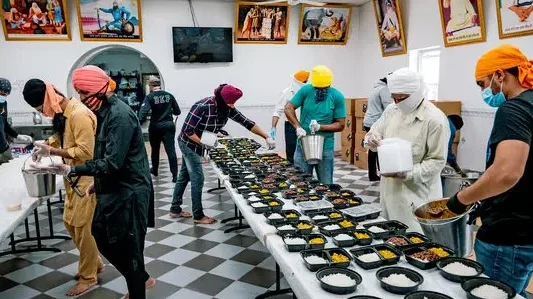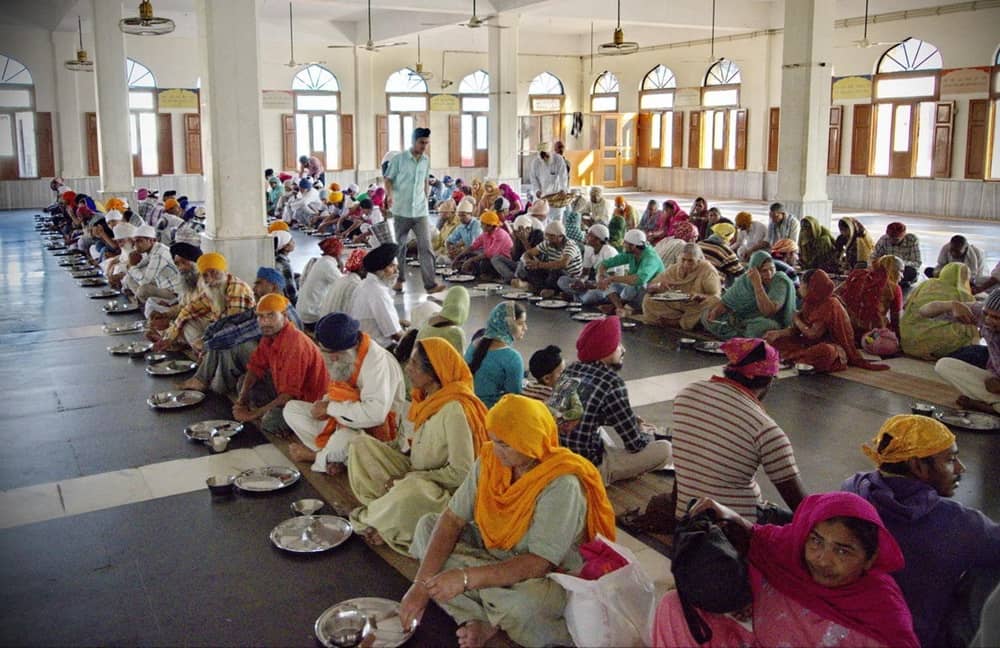The Sikh community has long been known for its commitment to selfless service, or “seva,” a core principle of Sikhism. One of the most visible expressions of this principle is the tradition of langar, where free meals are prepared and served to anyone in need. During the COVID-19 pandemic, this tradition found new energy and purpose in America’s turmoil.
Langar in Action: Feeding Crowds During the Pandemic In Queens Village, New York, the Sikh Center of New York exemplified this tradition by serving over 145,000 free meals in just ten weeks. This effort was part of a broader initiative by Sikh gurdwaras across the United States to provide food assistance during the pandemic. Gurdwaras, with their well-equipped kitchens and dedicated volunteers, were uniquely positioned to handle the scale of assistance required.
Supporting Protests and Community Events: Beyond feeding those affected by the pandemic, Sikh volunteers also supported protests against racial injustice. In Sunnyside, New York, volunteers from the Sikh Center served meals to protesters, demonstrating solidarity and support for the cause. This act of service reflects the Sikh belief in standing up for justice and equality.
The Tradition of Langar:
Langar is more than just a meal; it is a symbol of Sikhism’s rejection of the caste system and its emphasis on equality. The largest gurdwaras, like the Golden Temple in Amritsar, serve over 100,000 people daily. This tradition has been adapted in the U.S., where gurdwaras have modified their menus to suit local tastes while maintaining the core principle of serving all who come.
Conclusion: The Sikh community’s efforts during the pandemic and beyond demonstrate the enduring power of langar as a symbol of service and unity. As the world continues to face challenges, the tradition of langar serves as a reminder of the importance of compassion and selflessness.



